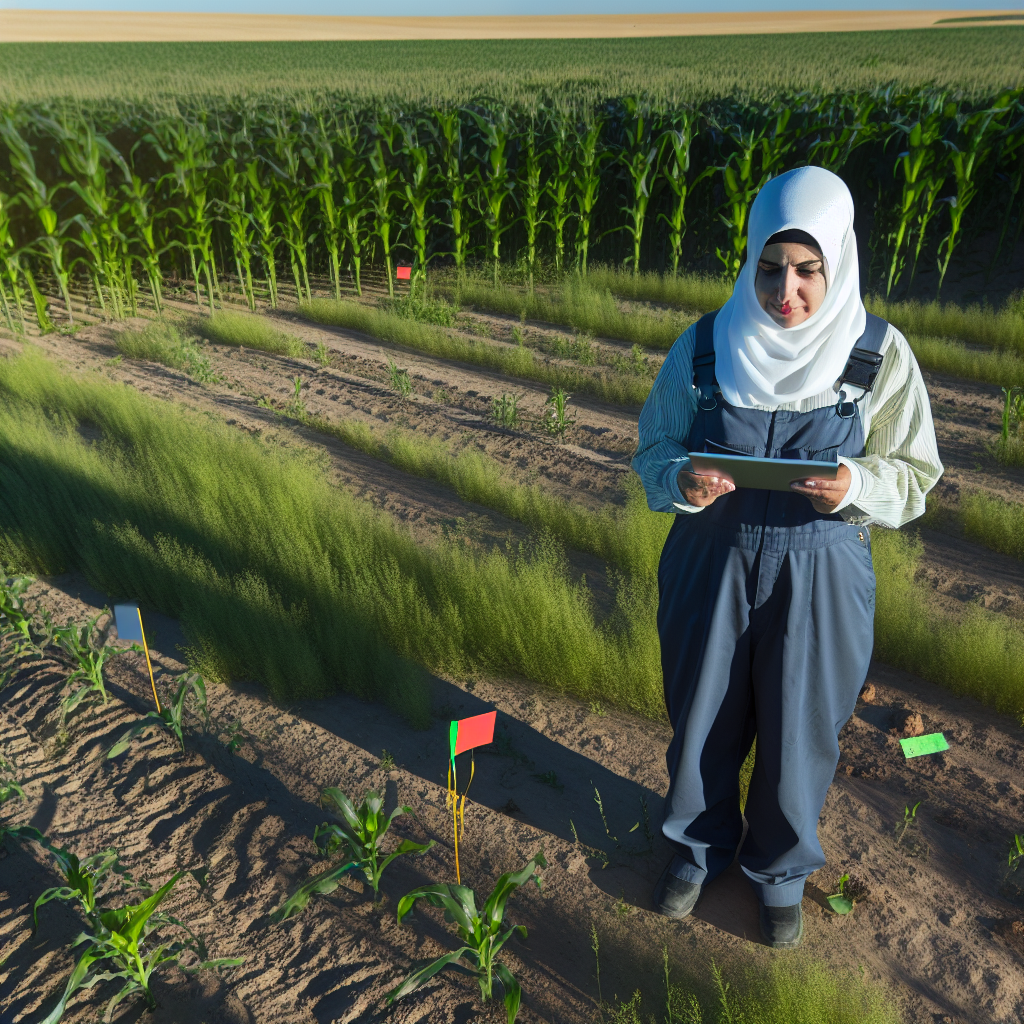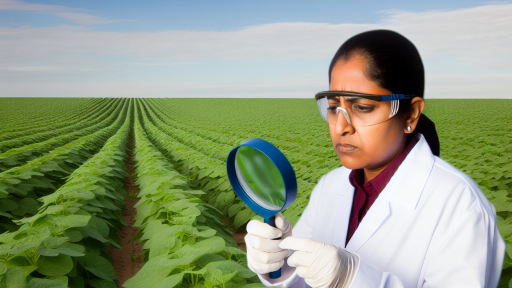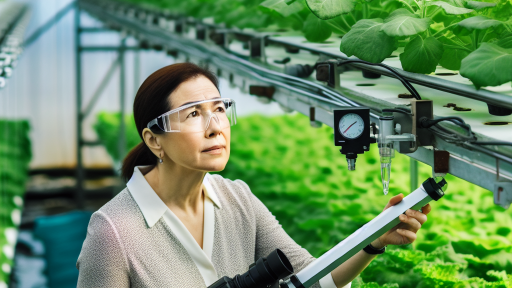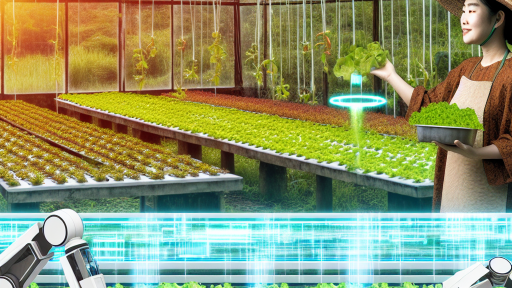Introduction to Crop Monitoring Technologies
Modern agriculture increasingly relies on advanced crop monitoring technologies.
These technologies enhance crop production efficiency and sustainability.
Farmers can leverage various tools to monitor crop health accurately.
Additionally, these tools help in timely decision-making for pest and nutrient management.
Importance of Crop Monitoring
Crop monitoring plays a crucial role in maximizing yields.
It assists farmers in detecting early signs of plant stress.
As a result, they can implement corrective measures more swiftly.
This proactive approach can save both time and resources.
Types of Crop Monitoring Technologies
Several technologies are available for effective crop monitoring.
Satellite imagery provides a broad view of crop conditions.
Drone technology offers detailed aerial insights into specific fields.
Soil sensors deliver real-time data on moisture levels and nutrient status.
Both remote sensing and precision agriculture techniques enhance crop management.
Emerging Trends in Crop Monitoring
Artificial intelligence and machine learning are transforming crop monitoring.
These technologies analyze large datasets to predict crop performance.
Transform Your Agribusiness
Unlock your farm's potential with expert advice tailored to your needs. Get actionable steps that drive real results.
Get StartedAs a result, farmers can make informed decisions based on data-driven insights.
Furthermore, the integration of IoT devices facilitates continuous monitoring.
Challenges and Considerations
Despite the benefits, challenges exist in adopting new technologies.
Cost remains a barrier for many small-scale farmers.
Additionally, technical knowledge is required to operate advanced tools.
Support and training are essential for effective technology implementation.
The Role of Drones in Precision Agriculture
Introduction to Drones in Agriculture
Drones have transformed crop monitoring in agriculture.
They provide farmers with real-time data about their fields.
This technology enhances the efficiency of farm management.
Advantages of Using Drones
Drones offer high-resolution aerial imagery.
This imagery improves the accuracy of crop health assessments.
Moreover, they cover large areas quickly.
Farmers can gather data at a fraction of the cost of traditional methods.
Drones for Crop Health Monitoring
Crop health monitoring is one of the primary uses of drones.
They detect issues like pests and diseases early on.
With this information, farmers can target specific areas needing attention.
This proactive approach helps to minimize crop loss.
Integration with Other Technologies
Drones work well with other precision agriculture technologies.
They can integrate with data management systems.
This integration enhances overall farm productivity.
Farmers can make informed decisions based on comprehensive data.
Drones for Irrigation Management
Irrigation management benefits considerably from drone technology.
Drones assess soil moisture levels effectively.
Farmers can optimize water use with accurate data.
Showcase Your Farming Business
Publish your professional farming services profile on our blog for a one-time fee of $200 and reach a dedicated audience of farmers and agribusiness owners.
Publish Your ProfileThis practice conserves water and improves yields.
Challenges and Considerations
Despite their benefits, drones present some challenges.
Regulations regarding drone usage can be complex.
Additionally, learning to use drone technology requires training.
Farmers must be prepared for the initial investment and ongoing costs.
Remote Sensing Techniques for Soil and Crop Analysis
Introduction to Remote Sensing
Remote sensing refers to gathering data from a distance.
This technology uses satellites and aerial imagery to analyze crops and soil.
Farmers can utilize remote sensing for precise monitoring.
Types of Remote Sensing Techniques
Several techniques exist for effective soil and crop analysis.
Each method offers unique advantages and insights.
- Satellite Imagery
- Aerial Drones
- Ground-Based Sensors
Satellite Imagery
Satellite imagery provides extensive coverage over large areas.
It captures data on vegetation health and growth patterns.
Additionally, it can monitor soil moisture levels effectively.
Aerial Drones
Aerial drones offer high-resolution images and flexibility.
They allow farmers to survey small fields quickly.
Furthermore, drones can collect data on pest populations.
Ground-Based Sensors
Ground-based sensors monitor soil conditions in real-time.
These sensors measure variables such as temperature and moisture.
They’re especially useful for targeted irrigation practices.
Applications in Precision Agriculture
Remote sensing is vital for precision agriculture.
It helps farmers make informed decisions about crop management.
Consequently, it increases crop yields and reduces waste.
Farmers can tailor their inputs based on specific crop needs.
Benefits of Remote Sensing Techniques
Remote sensing brings numerous benefits to agriculture.
First, it enhances productivity by guiding resource allocation.
Second, it minimizes environmental impact through smarter practices.
Lastly, it supports sustainable farming by monitoring changes over time.
Challenges in Implementation
Despite its advantages, remote sensing faces challenges.
Some farmers may lack technical expertise to utilize these tools.
Moreover, the initial investment can be substantial for small operations.
Lastly, data interpretation may require specialized skills.
Learn More: Effective Cover Crop Management Techniques
The Impact of IoT Devices on Real-Time Crop Monitoring
Revolutionizing Agricultural Practices
IoT devices have transformed how farmers monitor crops.
These devices provide real-time data essential for effective decision-making.
Moreover, they facilitate efficient resource management across vast fields.
Enhanced Data Collection and Analysis
Farmers now have access to an array of sensors and cameras.
These tools collect critical information on soil moisture and plant health.
Consequently, this data allows for timely interventions when needed.
Farmers can analyze trends and patterns to optimize yields.
As a result, crops receive targeted care based on real-time developments.
Showcase Your Farming Business
Publish your professional farming services profile on our blog for a one-time fee of $200 and reach a dedicated audience of farmers and agribusiness owners.
Publish Your ProfileImproving Irrigation Practices
Smart irrigation systems utilize IoT technology effectively.
They automate watering schedules based on soil moisture data.
This automation reduces water waste and improves crop health.
Farmers can adjust irrigation practices instantly through mobile apps.
Thus, they ensure crops receive the right amount of water at all times.
Integrating Weather Data for Better Outcomes
IoT devices can integrate with weather forecasting systems.
This integration allows farmers to prepare for adverse weather conditions.
By accessing localized weather information, they can make informed decisions.
For example, farmers can protect crops from sudden frosts or storms.
This proactive approach minimizes potential losses significantly.
Boosting Crop Protection Measures
IoT devices enhance pest and disease monitoring on farms.
Sensors detect early signs of infestations, allowing for targeted treatments.
This leads to reduced pesticide use and healthier crops.
Additionally, farmers can deploy drones for aerial scouting of fields.
Such measures promote sustainable agricultural practices overall.
Enhancing Supply Chain Efficiency
IoT technology streamlines the agricultural supply chain remarkably.
Real-time tracking of crops ensures timely delivery to markets.
This transparency helps maintain optimal storage conditions during transport.
Consequently, farmers minimize food spoilage and losses.
Customers also benefit from fresher products and improved quality.
Discover More: Automated Crop Monitoring Systems For Farmers
Data Analytics and Machine Learning Applications in Agriculture
The Rise of Data Analytics in Agriculture
Data analytics has transformed agricultural practices in recent years.
Farmers now leverage data to improve crop yield and profitability.
By analyzing soil conditions, weather patterns, and crop health, farmers make informed decisions.
This proactive approach enhances productivity while minimizing environmental impact.
Machine Learning’s Role in Crop Monitoring
Machine learning algorithms analyze vast datasets quickly and accurately.
These algorithms detect patterns and insights that humans may overlook.
Farmers can predict pest infestations and diseases using predictive analytics.
This foresight allows for timely interventions, safeguarding crops.
Remote Sensing Technologies
Remote sensing technologies enable precise crop monitoring.
Drone imagery and satellite data offer real-time insights into crop health.
Farmers can track crop progress and identify areas needing attention.
This technology helps optimize inputs like water, fertilizers, and pesticides.
Decision Support Systems
Decision support systems (DSS) integrate data from multiple sources.
They provide actionable insights tailored to specific farming needs.
Farmers can simulate different scenarios to choose optimal strategies.
This reduces risk and enhances the likelihood of successful outcomes.
Real-World Applications
Various companies utilize data analytics and machine learning today.
AgriTech Solutions harnesses machine learning for pest management.
GreenField Analytics optimizes irrigation through data analysis.
Showcase Your Farming Business
Publish your professional farming services profile on our blog for a one-time fee of $200 and reach a dedicated audience of farmers and agribusiness owners.
Publish Your ProfileSuch innovations drive sustainability in agriculture while increasing yields.
Future Prospects
The future of agriculture is bright with data-driven technologies.
Continued advancements will enhance data accessibility and usability.
As a result, more farmers will adopt these technologies in their practices.
We anticipate significant improvements in crop resilience and sustainability.
You Might Also Like: Precision Agriculture Techniques For Modern Farmers

The Benefits of Automated Irrigation Systems
Automated irrigation systems optimize water usage effectively.
They reduce water waste due to over-irrigation.
This technology ensures crops receive the right amount of water.
Moreover, it adjusts water levels based on weather conditions.
Efficiency in Water Usage
Automated systems can lead to significant cost savings.
Less water usage translates to lower utility bills.
Additionally, farmers save on labor costs with automation.
This allows for more efficient resource allocation overall.
Cost Savings
Consistent watering promotes healthier crops.
Automated systems help maintain optimal soil moisture levels.
This consistency reduces the risk of drought stress.
Furthermore, it lowers the chances of disease outbreaks caused by overwatering.
Enhanced Crop Health
These systems often come equipped with sensors and data analytics.
Such features provide valuable insights into soil conditions.
This information aids in making informed irrigation decisions.
Consequently, farmers can tailor their approach to meet specific crop needs.
Data-Driven Insights
Automated irrigation promotes sustainable farming practices.
It minimizes runoff and water pollution.
Moreover, this technology helps in conserving local water supplies.
As a result, farmers can contribute positively to the environment.
See Related Content: Implementing Quality Control in Post-Harvest Steps
Advancements in Mobile Applications for Farmers
Increasing Accessibility of Agricultural Data
Mobile applications provide farmers with immediate access to vital agricultural data.
This accessibility fosters informed decision-making throughout their farming practices.
Farmers can track weather forecasts and soil moisture levels in real-time.
Consequently, they can adapt farming strategies quickly to changing conditions.
Enhanced Crop Management Tools
Modern apps offer advanced crop management features for farmers.
Users can monitor plant health and growth patterns efficiently.
Moreover, these tools allow for the identification of potential pest issues.
Farmers can take preventive measures, which saves time and resources.
Integration of Precision Agriculture
Precision agriculture has transformed the farming landscape through mobile technology.
Farmers utilize GPS technology to assess field variability effectively.
This integration enhances the accuracy of planting and harvesting techniques.
Furthermore, it allows for optimal resource allocation, reducing waste.
Facilitating Collaboration and Community Connection
Mobile applications promote collaboration among farmers and agricultural experts.
Showcase Your Farming Business
Publish your professional farming services profile on our blog for a one-time fee of $200 and reach a dedicated audience of farmers and agribusiness owners.
Publish Your ProfileThese platforms allow users to share insights and best practices seamlessly.
Additionally, farmers can connect with local cooperatives for support.
This sense of community enhances the overall farming experience.
Data-Driven Decision Making
Data analytics tools within apps empower farmers to make strategic decisions.
These insights can lead to improved crop yields and profit maximization.
Furthermore, farmers can analyze historical data for future planning.
Predictive analytics is becoming an essential part of modern farming.
The Future of Crop Monitoring: Trends and Innovations
Advancements in Sensor Technology
Sensor technology has revolutionized crop monitoring practices.
These devices collect real-time data on soil and crop health.
Moreover, they enhance decision-making for resource management.
Contemporary sensors provide critical information on moisture levels.
Farmers can thus optimize irrigation schedules effectively.
Integration of Drone Technology
Drones have become essential for modern agricultural practices.
They offer aerial imagery that monitors crop health efficiently.
Additionally, drones can identify pest issues accurately.
This technology allows farmers to respond quickly to threats.
Consequently, using drones improves yield potential substantially.
Data Analytics and Machine Learning
Data analytics plays a crucial role in crop monitoring.
It transforms raw data into actionable insights.
Machine learning algorithms identify patterns in agricultural data.
This analysis helps predict crop yields and market trends.
As a result, farmers can make informed decisions.
Sustainable Practices and Precision Agriculture
Modern crop monitoring emphasizes sustainability.
Precision agriculture practices minimize resource wastage.
Farmers use technology to apply inputs more efficiently.
For example, soil sensors guide nutrient application effectively.
This practice enhances soil health and promotes biodiversity.
The Role of Wireless Communication
Wireless communication technology connects devices seamlessly.
This connectivity allows for real-time data sharing.
Farmers can access crucial information instantly via smartphones.
Such accessibility promotes timely interventions in crop management.
Overall, wireless technology enhances operational efficiency.
Future Collaborations and Innovations
Collaboration among tech companies is reshaping agriculture.
Innovations in crop monitoring systems will continue to evolve.
Partnerships facilitate the exchange of ideas and resources.
As a result, agricultural technologies become increasingly integrated.
This shift drives the evolution of smart farming practices.
Additional Resources
Precision Agriculture: Benefits and Challenges for Technology …




